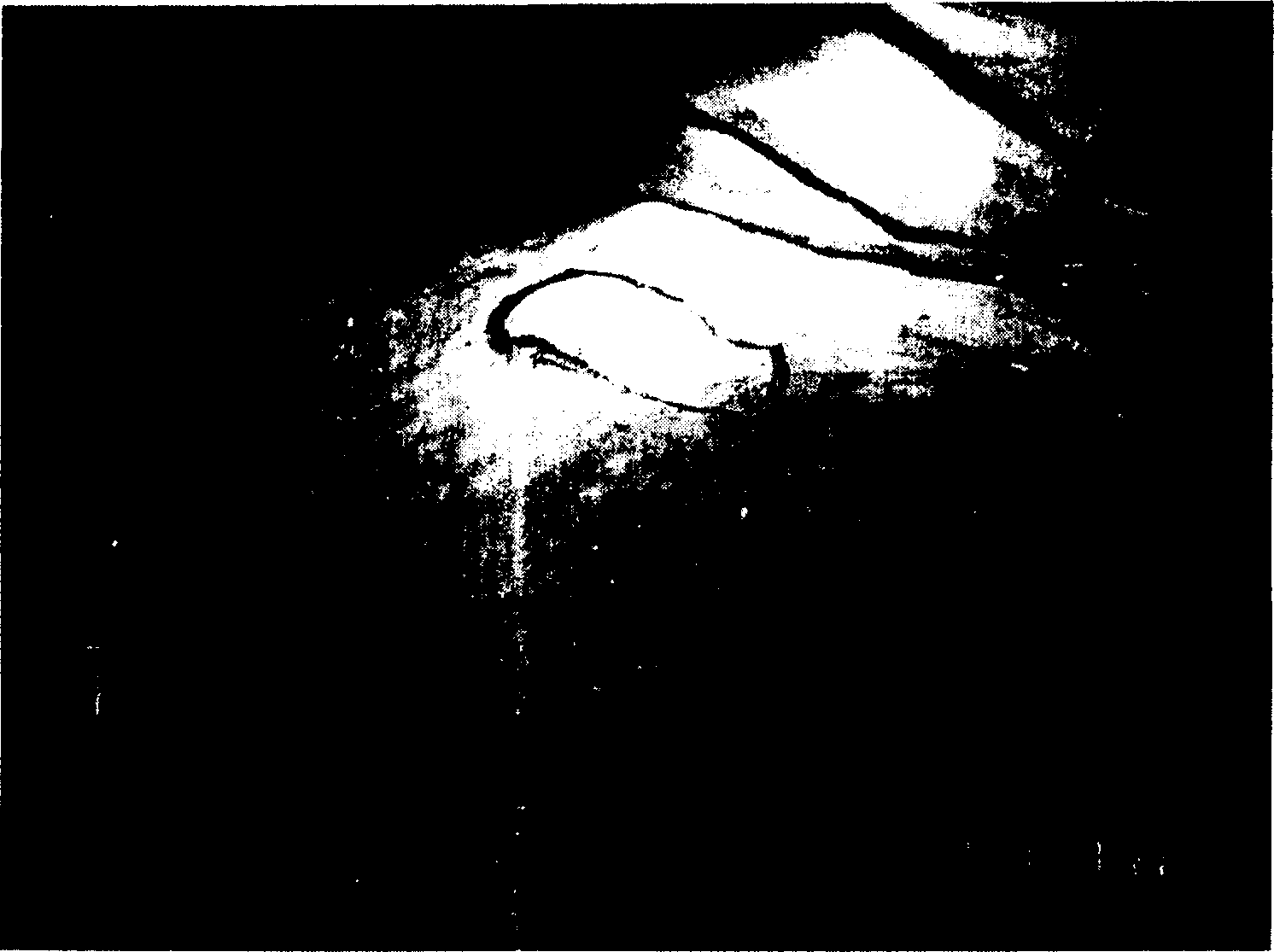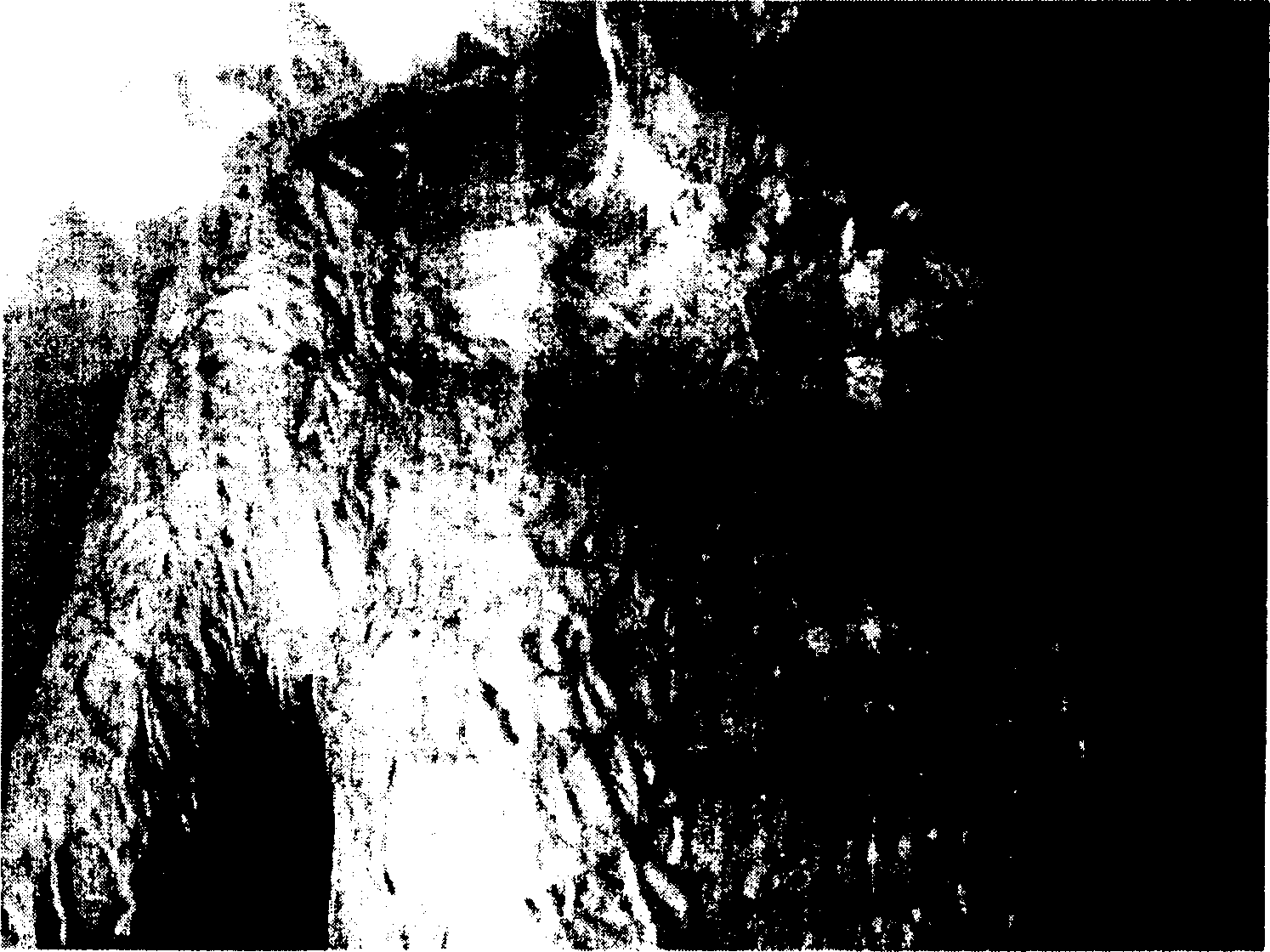Tissue engineering autologous complex skin and its preparation method
A tissue engineering and autologous technology, applied in the fields of biochemical equipment and methods, tissue culture, prosthesis, etc., can solve the problems of slow absorption of stents, unfavorable wound healing, short survival period, easy breakage, etc., and achieve long tissue survival time and repair. Fast, unbreakable effect
- Summary
- Abstract
- Description
- Claims
- Application Information
AI Technical Summary
Problems solved by technology
Method used
Image
Examples
Embodiment 1
[0026] Embodiment 1, preparation of tissue engineered composite skin
[0027] 1. Extraction of patient's own healthy cells and cell culture passage
[0028] (1) Extraction of patient's own healthy cells
[0029] 1. Materials obtained from the operating room
[0030] 1) Use tincture of medical iodine to clean the patient's skin surface;
[0031] 2) Rinse the leather surface with physiological saline to remove residual iodine tincture;
[0032] 3) Take a narrow and long skin of 1cm×2.5cm;
[0033] 4) Put the removed skin into the storage solution and send it to the cell culture room.
[0034] 2. Preservation of skin tissue after collection: use 5 ml of DMEM (purchased from Hyclone, USA) culture solution containing 100 units / ml penicillin and 100 mg / ml streptomycin to preserve the tissue in a preservation tube (4° C.).
[0035] 3. Sterilize and clean in an ultra-clean workbench, and separate large pieces of tissue: wash the tissue with 0.1M PBS containing 100 units / ml penici...
Embodiment 2
[0078] Embodiment 2, clinical report
[0079] 1. Inclusion criteria
[0080] 1. The wounds of patients with deep burns after incision and scab removal.
[0081] 2. Long-term non-healing ulcer wounds and granulation wounds caused by various reasons (late granulation wounds after third-degree burns, refractory ulcer wounds such as diabetic feet, etc.).
[0082] 3. Extensive scar hyperplasia, contracture deformity, or keloids, hypertrophic scars, hard, itchy, painful scars all over the body, scar removal and skin grafting are required.
[0083] Patients who belong to the above situation and are under the age of 60 are eligible for inclusion.
[0084] 2. Criteria for Excluding Cases
[0085] 1. Compound injuries such as shock period and chemical poisoning.
[0086] 2. Combined with serious primary diseases such as cardiovascular, cerebrovascular, liver, kidney, and hematopoietic system.
[0087] 3. People with allergies or autoimmune diseases.
[0088] 3. Materials
[0089]...
PUM
 Login to View More
Login to View More Abstract
Description
Claims
Application Information
 Login to View More
Login to View More - R&D
- Intellectual Property
- Life Sciences
- Materials
- Tech Scout
- Unparalleled Data Quality
- Higher Quality Content
- 60% Fewer Hallucinations
Browse by: Latest US Patents, China's latest patents, Technical Efficacy Thesaurus, Application Domain, Technology Topic, Popular Technical Reports.
© 2025 PatSnap. All rights reserved.Legal|Privacy policy|Modern Slavery Act Transparency Statement|Sitemap|About US| Contact US: help@patsnap.com



